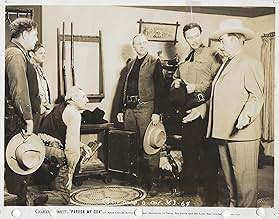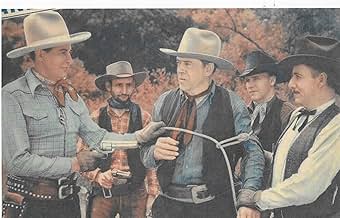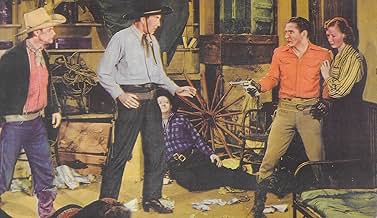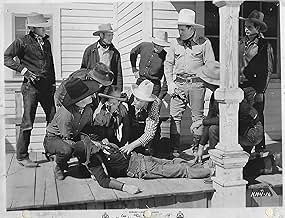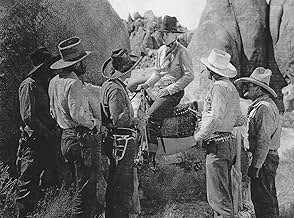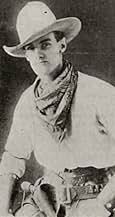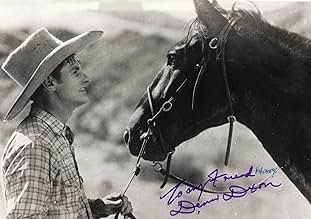Victor Adamson(1890-1972)
- Actor
- Producer
- Director
Someday a clever producer will tell the story of Hollywood's "Poverty Row" of the 1920s-'40s (although Hollywood Cowboy (1975) was a valiant effort, it left a lot to be desired), which was centered on Gower Street. So many fly-by-night production companies--which cranked
out mostly westerns, because they were so cheap to shoot--were headquartered there that the area became known as "Gower Gulch." Such a story would have to include Victor Adamson, a man whose unique, if inept, cinematic vision rivaled that of schlockmeister icons
Dwain Esper, Robert J. Horner and later, the King of the Hollywood hacks himself, Edward D. Wood Jr..
Although he was born in Kansas City, Missouri in 1890, Adamson's family moved to New Zealand when he was very young, and he was raised there. He returned to the USA around 1916 or 1917, and attempted to break into the burgeoning film business in Hollywood, California. He had been a champion horse rider and roper while living on a ranch in New Zealand and thought he was ripe for stardom in westerns. He brought with him a small film he had made in New Zealand and, astonishingly enough, actually managed to find a company willing to release it. After landing a few uncredited small parts in a few small silent movies in 1920s, Adamson decided that the best road to stardom was one he would make himself, so he began to produce, direct, and star in his own films, using the name "Art Mix." (and later under the name "Denver Dixon"). Here's where it gets really confusing: for reasons known only to himself he decided to have an actor named George Kesterson also play the Art Mix character and, in an even more confusing turn of events, once hired a rodeo champion named Bob Roberts to also play "Art Mix." Cowboy superstar Tom Mix eventually filed a copyright infringement suit against Adamson because of his use of the Mix name. In a move that could only happen in Hollywood, Adamson got around that by finding a man whose real name actually was Art Mix and hiring him to play the character--so at one point there were four different men playing a cowboy named Art Mix! Kesterson and Adamson eventually parted ways, but Kesterson used the Art Mix name, despite Adamson's efforts to stop him, for the remainder of his career.
It didn't really matter that much who played "Art Mix," though, as Adamson's films, all low-budget in the extreme with a reputation for laugh-inducing incompetence, were released via the states rights system--in which regional distributors bought the prints outright and kept them in circulation for as long as they could remain spliced together--which meant that not a whole lot of people wound up seeing them anyway. Even the most die-hard western fan had trouble sitting through an Art Mix feature on the bottom half of a Saturday-afternoon matinee. Most of his sound movie productions in the 1930s were filmed in only two or three days with low budgets of $2,000 or so, featuring actors who had trouble remembering their lines, misspelled title cards, headache-inducing editing, a near total lack of understanding of sound, and very often the use of an impaired (visually or otherwise) cinematographer (i.e., his $2,500 out-of-focus extravaganza, Range Riders (1934), in which the cameraman's competence apparently wasn't as important as his willingness to work for next to nothing).
Adamson (working under his pseudonym 'Denver Dixon') continued to produce, direct, and star in his own bottom-of-the-barrel westerns and appeared in small roles in oaters made by others until the late 1930s, when he decided to concentrate his career mainly on writing and acting, confining his roles to small parts in the innumerable B westerns being churned out in Hollywood at the time. He continued acting in small roles in various films and television shows until his death in 1972 from a heart attack at age 82.
His son, director/producer Al Adamson, kept his legacy as well as the family name and reputation alive in the low-budget film market by grinding out micro-budgeted westerns, hilariously inept horror films and vapid softcore sex comedies for decades--he even managed to cash in on the blaxploitation craze of the '70s with a couple of clunkers--until his murder, by a building contractor with whom he was having a legal dispute, in 1995.
Although he was born in Kansas City, Missouri in 1890, Adamson's family moved to New Zealand when he was very young, and he was raised there. He returned to the USA around 1916 or 1917, and attempted to break into the burgeoning film business in Hollywood, California. He had been a champion horse rider and roper while living on a ranch in New Zealand and thought he was ripe for stardom in westerns. He brought with him a small film he had made in New Zealand and, astonishingly enough, actually managed to find a company willing to release it. After landing a few uncredited small parts in a few small silent movies in 1920s, Adamson decided that the best road to stardom was one he would make himself, so he began to produce, direct, and star in his own films, using the name "Art Mix." (and later under the name "Denver Dixon"). Here's where it gets really confusing: for reasons known only to himself he decided to have an actor named George Kesterson also play the Art Mix character and, in an even more confusing turn of events, once hired a rodeo champion named Bob Roberts to also play "Art Mix." Cowboy superstar Tom Mix eventually filed a copyright infringement suit against Adamson because of his use of the Mix name. In a move that could only happen in Hollywood, Adamson got around that by finding a man whose real name actually was Art Mix and hiring him to play the character--so at one point there were four different men playing a cowboy named Art Mix! Kesterson and Adamson eventually parted ways, but Kesterson used the Art Mix name, despite Adamson's efforts to stop him, for the remainder of his career.
It didn't really matter that much who played "Art Mix," though, as Adamson's films, all low-budget in the extreme with a reputation for laugh-inducing incompetence, were released via the states rights system--in which regional distributors bought the prints outright and kept them in circulation for as long as they could remain spliced together--which meant that not a whole lot of people wound up seeing them anyway. Even the most die-hard western fan had trouble sitting through an Art Mix feature on the bottom half of a Saturday-afternoon matinee. Most of his sound movie productions in the 1930s were filmed in only two or three days with low budgets of $2,000 or so, featuring actors who had trouble remembering their lines, misspelled title cards, headache-inducing editing, a near total lack of understanding of sound, and very often the use of an impaired (visually or otherwise) cinematographer (i.e., his $2,500 out-of-focus extravaganza, Range Riders (1934), in which the cameraman's competence apparently wasn't as important as his willingness to work for next to nothing).
Adamson (working under his pseudonym 'Denver Dixon') continued to produce, direct, and star in his own bottom-of-the-barrel westerns and appeared in small roles in oaters made by others until the late 1930s, when he decided to concentrate his career mainly on writing and acting, confining his roles to small parts in the innumerable B westerns being churned out in Hollywood at the time. He continued acting in small roles in various films and television shows until his death in 1972 from a heart attack at age 82.
His son, director/producer Al Adamson, kept his legacy as well as the family name and reputation alive in the low-budget film market by grinding out micro-budgeted westerns, hilariously inept horror films and vapid softcore sex comedies for decades--he even managed to cash in on the blaxploitation craze of the '70s with a couple of clunkers--until his murder, by a building contractor with whom he was having a legal dispute, in 1995.

